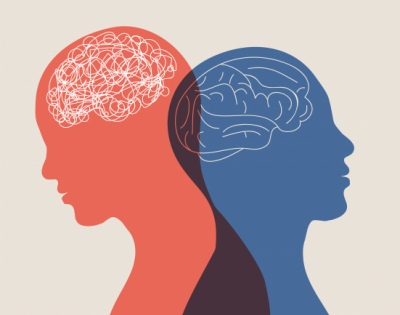Brainspotting therapy is a relatively new form of therapy that has gained popularity for its effectiveness in treating various mental health conditions. Brainspotting therapy is a type of psychotherapy that involves the use of eye movement to identify and process trauma, negative emotions, and other challenging experiences. Traditionally, brain-spotting therapy has been conducted in person, but with the advent of teletherapy, this type of therapy is now available online as well. In this article, we will discuss brain spotting therapy online and how it can be used to treat mental health issues.
Contents
- 1 What is Brain Spotting Therapy?
- 2 The Effectiveness of Brain Spotting Therapy
- 3 The Process of Brain Spotting Therapy Online
- 4 Advantages of Conducting Brain Spotting Therapy Online
- 5 Limitations and Challenges of Brain Spotting Therapy Online
- 6 How to Find a Qualified Online Brain Spotting Therapist?
- 7 Conclusion
What is Brain Spotting Therapy?

Brainspotting therapy is a relatively new form of psychotherapy that uses the client’s field of vision to identify and process trauma, negative emotions, and other challenging experiences. The therapy was developed by David Grand, a psychologist, and utilizes the relationship between eye movements and the brain to identify and treat emotional and psychological issues.
During a session, the therapist will guide the client to identify a “brain spot,” which is an eye position that correlates with a particular emotional or physical sensation related to a traumatic event. By focusing on this brain spot and allowing the mind to process the associated sensations and emotions, the client can release and resolve the trauma or negative experience.
The Effectiveness of Brain Spotting Therapy
There is growing evidence to suggest that brain spotting therapy can be highly effective in treating various mental health issues. While more research is needed, studies have shown promising results for the use of brain spotting therapy in treating conditions such as anxiety, depression, PTSD, addiction, and chronic pain.
The effectiveness of brain spotting therapy may be due to its ability to access and process traumatic memories and emotions that may be difficult to access through traditional talk therapy alone. By identifying the specific “brain spot” associated with a traumatic event or emotion, the therapist can help the client release and resolve the associated trauma or negative experience.
Overall, while more research is needed to fully understand the effectiveness of brain spotting therapy, the therapy has shown promise in treating various mental health conditions and may provide a unique and effective approach to processing trauma and negative experiences.
The Process of Brain Spotting Therapy Online

The process of brain spotting therapy online is very similar to traditional in-person sessions, with some adjustments made to accommodate the online format. Here’s a general overview of what to expect during an online brain-spotting therapy session:
- Pre-session preparation: Before the session, the therapist and client will arrange a time and date for the online session. The therapist may also provide some instructions for preparing the physical environment, such as finding a quiet and private space for the session.
- Connecting online: At the scheduled time, the therapist and client will connect online using a secure video conferencing platform. The therapist may also provide some guidance for setting up the camera and microphone to ensure that the session is as effective as possible.
- Establishing rapport: As with any therapy session, the therapist will establish rapport and create a safe and supportive environment for the client. They may also discuss the client’s goals for therapy and any concerns they may have about the online format.
- Identifying brain spots: Using the client’s field of vision, the therapist will guide the client to identify a “brain spot” associated with a particular emotion, sensation, or traumatic experience. This may involve focusing on a specific point on the screen or using other techniques to identify the brain spots.
- Processing trauma and negative experiences: Once the brain spot has been identified, the therapist will guide the client to focus on the associated emotion or sensation while allowing the mind to process the experience. This may involve various techniques, such as visualization or mindfulness exercises.
- Closing the session: At the end of the session, the therapist will help the client to “ground” themselves and return to the present moment. They may also provide some guidance for self-care and continued processing between sessions.
Advantages of Conducting Brain Spotting Therapy Online
Conducting brain spotting therapy online has several advantages that make it an appealing option for many clients. Here are some of the main advantages:
- Increased accessibility: Online brain spotting therapy eliminates geographic barriers, allowing clients to access therapy from anywhere in the world. This is especially beneficial for individuals who live in remote areas or who have mobility issues that make it difficult to attend in-person sessions.
- Convenience: Online brain spotting therapy can be done from the comfort of one’s own home or office, eliminating the need to commute to a therapist’s office. This can be particularly beneficial for individuals who have busy schedules or who may have difficulty leaving their homes for various reasons.
- Flexibility: Online brain spotting therapy may offer more scheduling flexibility than traditional in-person therapy. This is because therapists may have more availability to offer online sessions, and clients may be able to schedule sessions outside of traditional office hours.
- Increased sense of safety and privacy: For some individuals, attending therapy in person may be anxiety-provoking or uncomfortable. Online therapy allows clients to receive treatment in a familiar and private environment, which may increase their sense of safety and comfort.
- Reduced stigma: Online therapy may help to reduce the stigma associated with seeking mental health treatment, as clients can receive therapy without anyone knowing they are attending therapy in person.
Limitations and Challenges of Brain Spotting Therapy Online

While online brain spotting therapy has several advantages, it also has some limitations and challenges that may impact its effectiveness. Here are some of the main limitations and challenges:
- Technical issues: Technical problems with internet connectivity, video or audio quality, or platform compatibility can be a significant challenge to online brain spotting therapy. Technical difficulties can disrupt the therapy session and may affect the client’s ability to fully engage in the process.
- Reduced nonverbal communication: Online therapy can reduce the nonverbal communication between the therapist and client, which can impact the therapeutic relationship and the effectiveness of the therapy.
- Limited physical cues: Brainspotting therapy often involves the therapist guiding the client to move their eyes or body in certain ways. In an online format, it can be more difficult for the therapist to see and provide guidance on physical cues, which may impact the effectiveness of the therapy.
- Limited space: Clients may have limited space or privacy in their homes, which can impact their ability to fully engage in the therapy process. Clients may feel uncomfortable or self-conscious about participating in therapy in a shared space.
- Limited supervision: In some cases, the therapist may not have access to the same level of supervision or support in an online format as they would in an in-person setting. This may impact the quality of the therapy provided.
How to Find a Qualified Online Brain Spotting Therapist?

Finding a qualified online brain-spotting therapist can be challenging, but there are several resources available that can help. Here are some steps you can take to find a qualified online brain-spotting therapist:
- Check with professional organizations: Professional organizations, such as the Brainspotting International Association (BIA) or the International Society for the Study of Trauma and Dissociation (ISSTD), may have directories or databases of certified or trained brain spotting therapists. You can search their websites for a list of therapists and their contact information.
- Use online directories: Several online directories allow you to search for therapists by location, specialty, or other criteria. These directories may also indicate if the therapist offers online sessions. Examples of such directories include Mantracare or Therapymantra.
- Check with your insurance provider: If you have health insurance, you can check with your provider to see if they cover online brain spotting therapy and if they have a list of approved providers.
- Get referrals: Ask friends, family, or your primary care physician for referrals to qualified online brain-spotting therapists. Word-of-mouth referrals can be a valuable resource in finding a therapist.
- Research potential therapists: Once you have a list of potential therapists, research their qualifications, experience, and specialties. Check if they have any reviews or testimonials from past clients and if they have any disciplinary actions against them. You can also consider contacting them to ask questions or schedule a consultation before committing to therapy.
Conclusion
In conclusion, online brain spotting therapy offers a unique and effective approach to treating various mental health conditions. It utilizes the relationship between eye movements and the brain to identify and process trauma, negative emotions, and other challenging experiences.
Nevertheless, with a skilled and experienced therapist and a commitment to the therapeutic process, online brain spotting therapy can be just as effective as in-person sessions. If you are considering online brain spotting therapy, it is important to research potential therapists and choose someone qualified, experienced, and a good fit for your specific needs.
For more information, please contact MantraCare. Online therapy types include videoconferencing, phone sessions, messaging-based therapy, chat-based therapy, and therapy based on different problems. If you have any queries regarding Online Counseling experienced therapists at MantraCare can help: Book a trial therapy session


